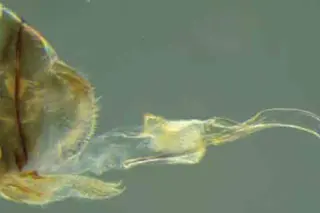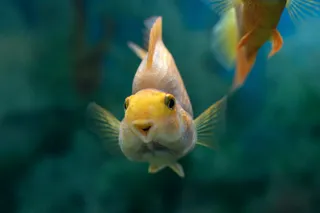The gynosome of a female cave insect. It features spikes to hold it in place once it's inserted into males. Credit: Current Biology, Yoshizawa et al. In the dark caves of Brazil, certain insects take sexual role-play to a whole new level. Female insects of the newly discovered genus Neotrogla have highly elaborate, spiky penises, which they insert into males’ vagina-like organ to reproduce. Reversed sex roles have been identified in several other species, including male seahorses that undergo pregnancy. However, after studying the mating habits of Neotrogla, which represents four distinct species, researchers have determined that this is the first example of an animal with sex-reversed genitalia.
When Neotrogla get busy, the female climbs on top of the male and inserts her penis-like structure, called a gynosome, into the male in order to receive sperm capsules. Once the pair is locked together, they’ll copulate for a marathon baby-making session ...














